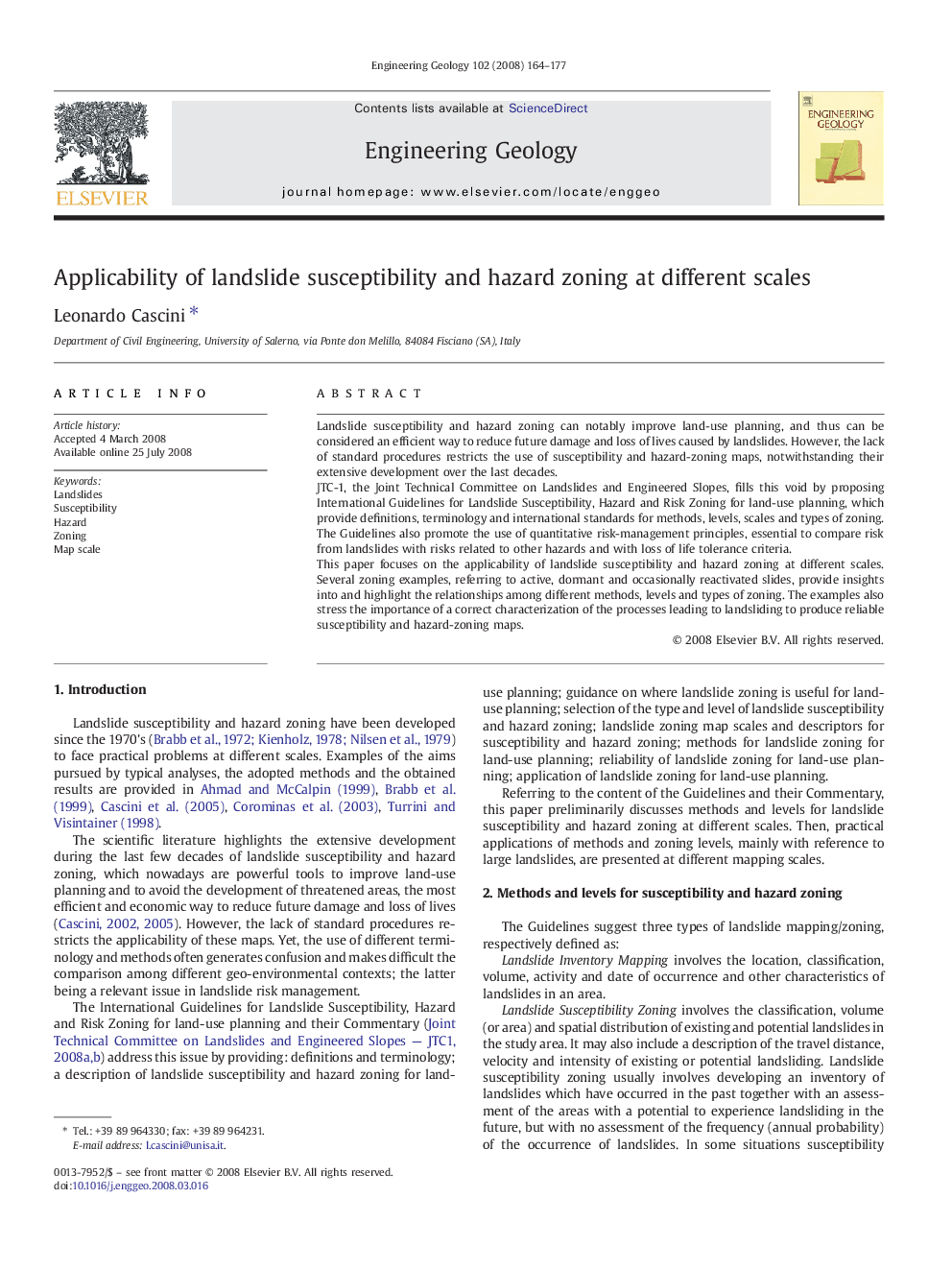| Article ID | Journal | Published Year | Pages | File Type |
|---|---|---|---|---|
| 4744646 | Engineering Geology | 2008 | 14 Pages |
Landslide susceptibility and hazard zoning can notably improve land-use planning, and thus can be considered an efficient way to reduce future damage and loss of lives caused by landslides. However, the lack of standard procedures restricts the use of susceptibility and hazard-zoning maps, notwithstanding their extensive development over the last decades.JTC-1, the Joint Technical Committee on Landslides and Engineered Slopes, fills this void by proposing International Guidelines for Landslide Susceptibility, Hazard and Risk Zoning for land-use planning, which provide definitions, terminology and international standards for methods, levels, scales and types of zoning. The Guidelines also promote the use of quantitative risk-management principles, essential to compare risk from landslides with risks related to other hazards and with loss of life tolerance criteria.This paper focuses on the applicability of landslide susceptibility and hazard zoning at different scales. Several zoning examples, referring to active, dormant and occasionally reactivated slides, provide insights into and highlight the relationships among different methods, levels and types of zoning. The examples also stress the importance of a correct characterization of the processes leading to landsliding to produce reliable susceptibility and hazard-zoning maps.
